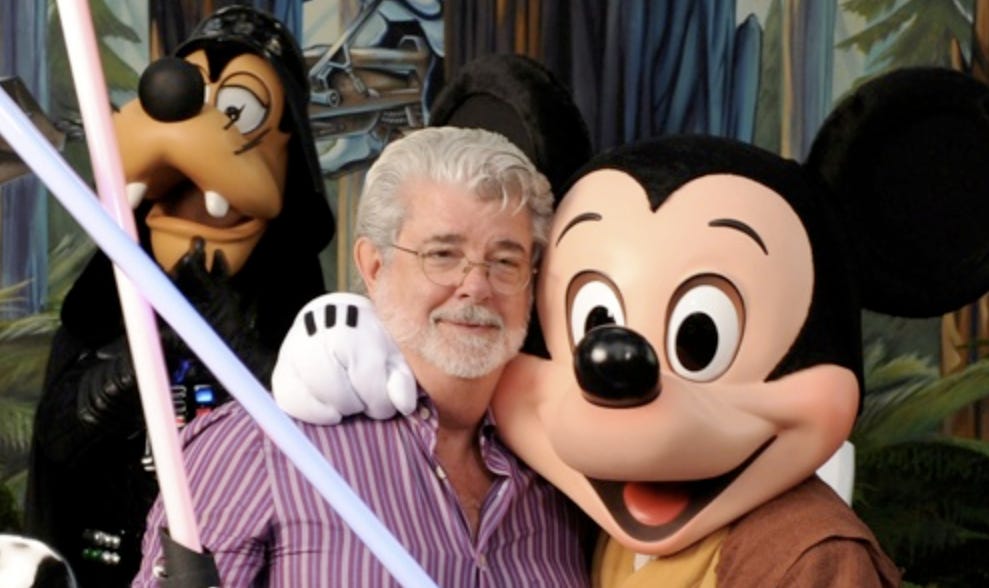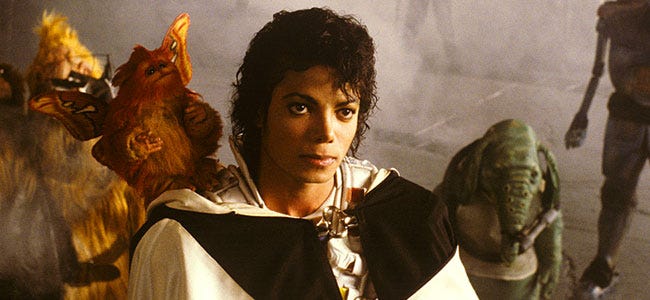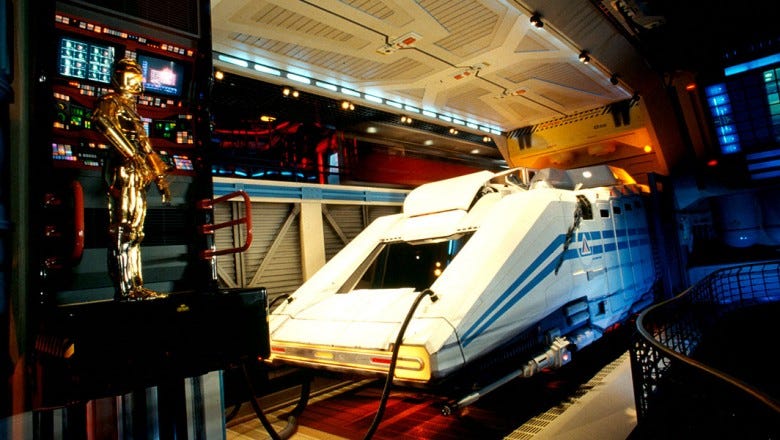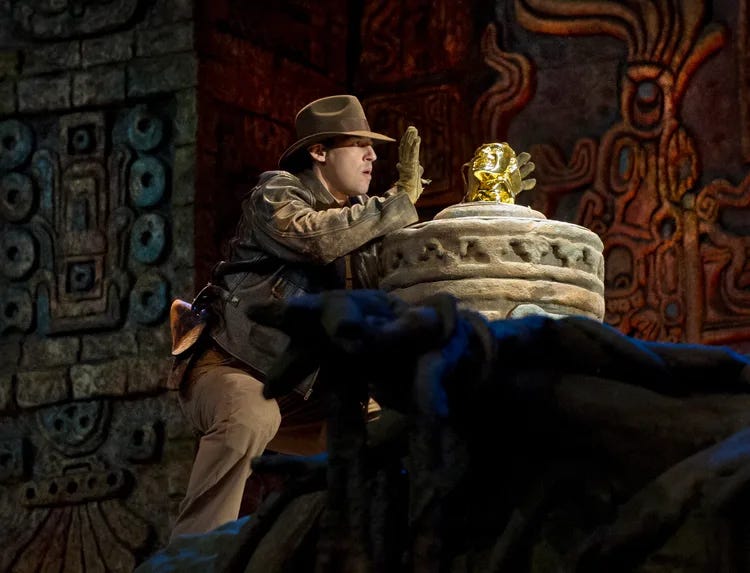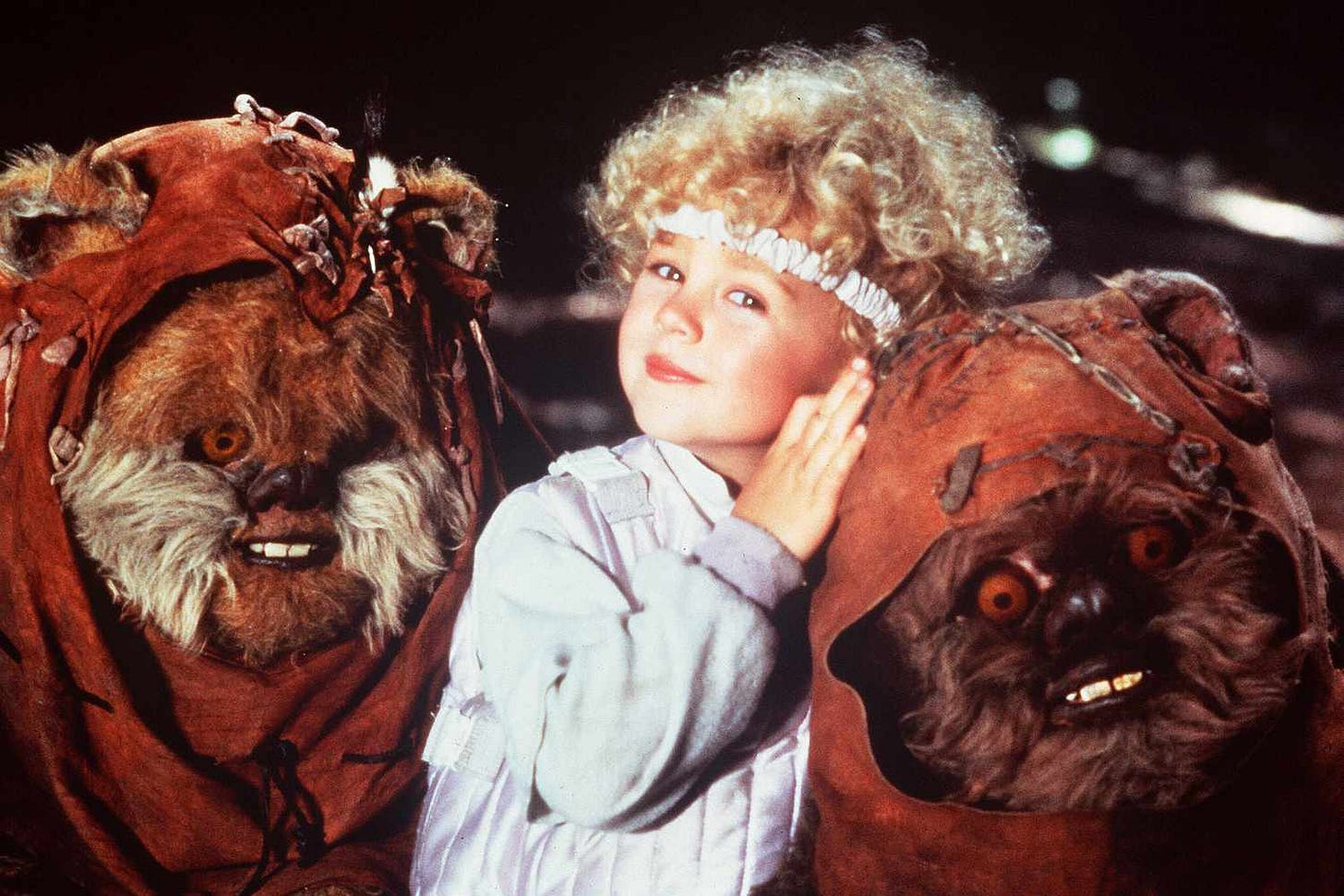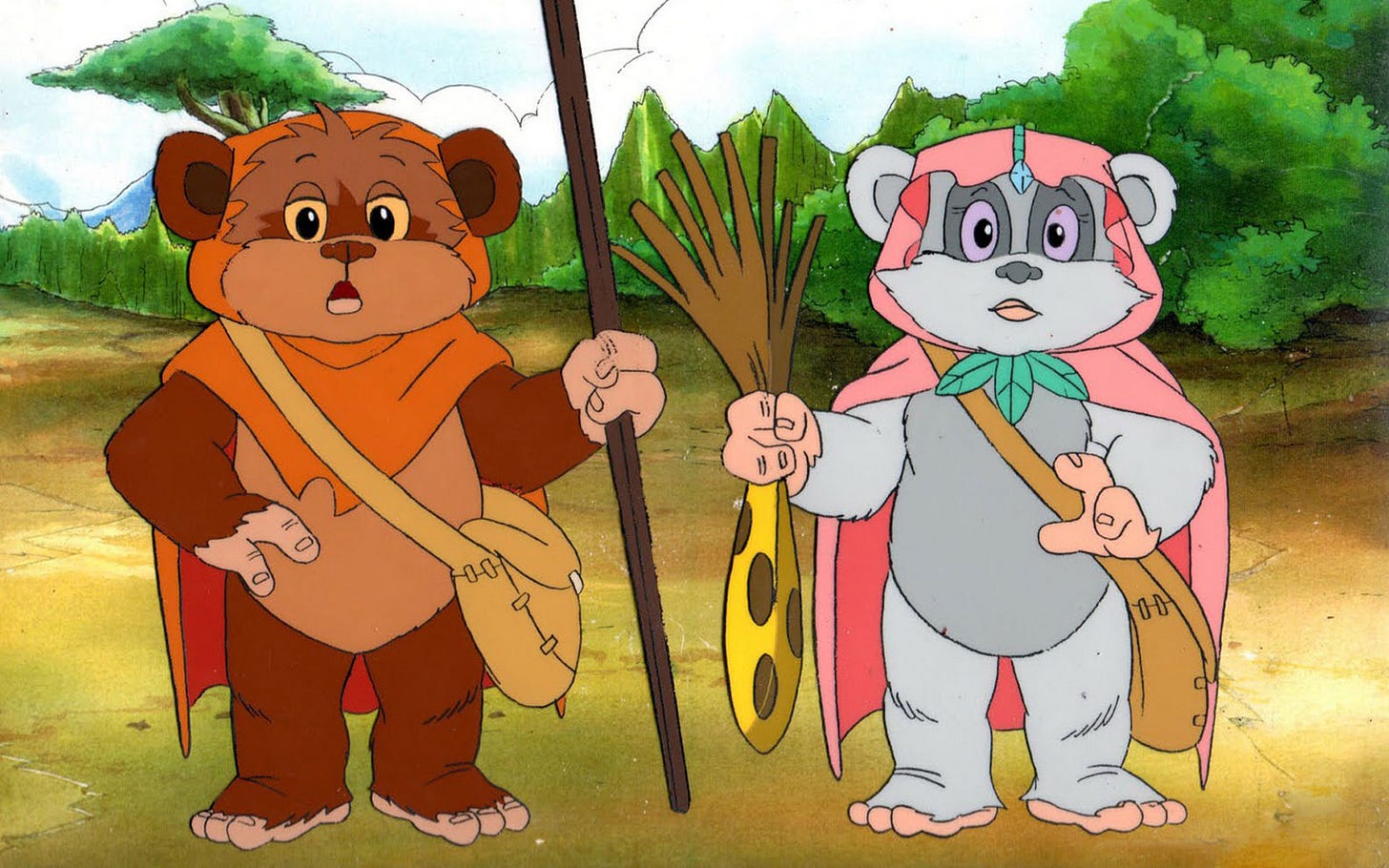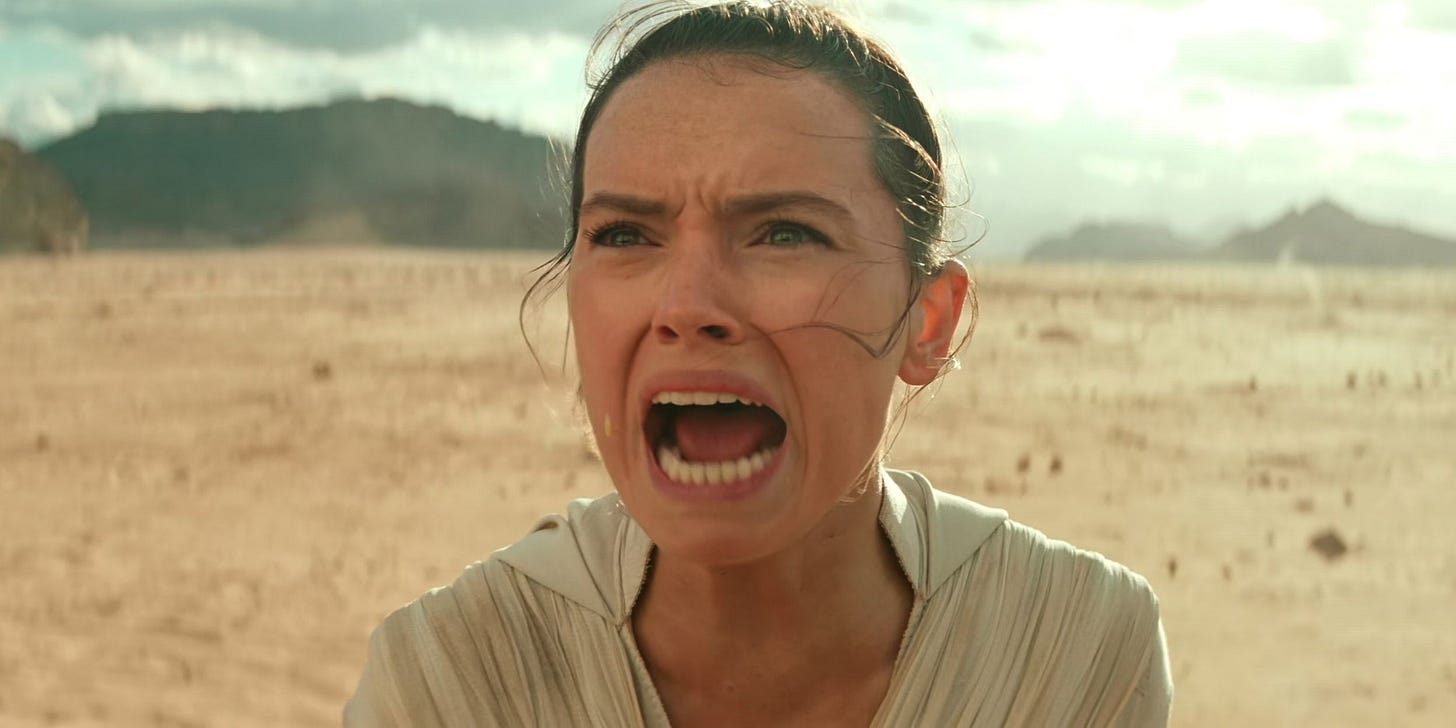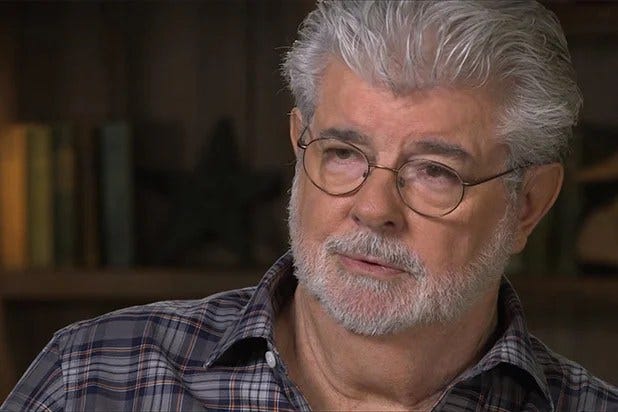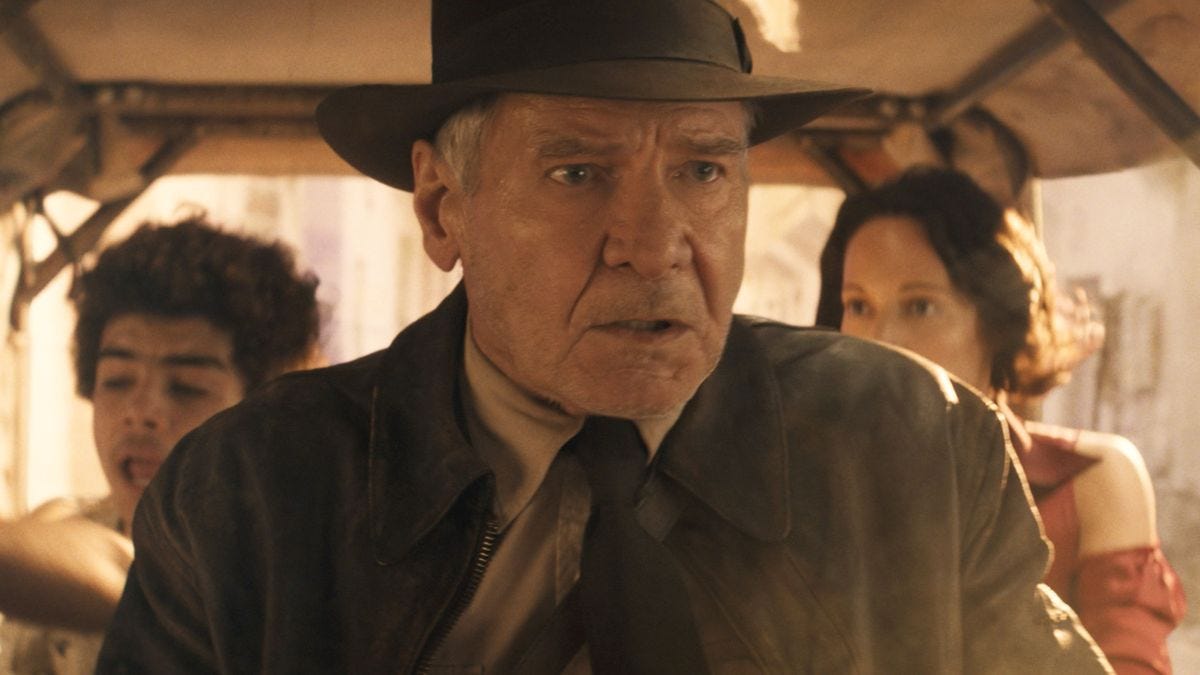Star Wars and Disney Had a Long History Together BEFORE Disney Bought Lucasfilm
When Disney announced its $4.05 billion acquisition of Lucasfilm in 2012, it marked a seismic shift in the entertainment landscape, bringing iconic franchises like Star Wars and Indiana Jones under the Mouse House umbrella. But this wasn't the start of their relationship—it was the culmination of decades of creative synergies.
Long before the deal, Lucasfilm and Disney (along with its owned entities) had forged a bond through groundbreaking theme park attractions, media broadcasts, and mutual respect for storytelling innovation.
This history reveals how two Hollywood powerhouses intertwined, setting the stage for what would become one of the most lucrative partnerships in pop culture.
Here’s the TL;DR…
Early Collaborations Began in the '80s: Disney and Lucasfilm kicked off with Captain EO in 1986, followed by Star Tours in 1987, blending Lucas's sci-fi expertise with Disney's park experiences.
Theme Park Magic: Attractions like the Indiana Jones Epic Stunt Spectacular (1989) and Indiana Jones Adventure (1995) brought Lucasfilm adventures to life in Disney parks worldwide.
Media Crossovers: Star Wars films aired on the Disney Channel as early as 1990, and events like Star Wars Weekends started in 1997, deepening fan engagement.
Lucas's Positive Outlook: George Lucas expressed admiration for Disney's theme park innovations and trusted them with his properties pre-acquisition.
Post-Acquisition Shift: Despite the strong foundation, tensions arose, with Lucas later voicing regrets amid perceived declines in the franchises.
The Genesis of a Galactic Partnership: Captain EO (1986)
The first major collaboration between Lucasfilm and Disney predates even the most famous Star Wars rides. In 1986, Captain EO, a 3D science fiction short film starring Michael Jackson, premiered at Disney theme parks. Directed by Francis Ford Coppola and executive produced by George Lucas, the project was a joint effort with Walt Disney Imagineering.
Lucas's involvement brought his signature visual effects prowess from Industrial Light & Magic (ILM), while Disney handled the in-theater effects like lasers, smoke, and starfields to create an immersive "4D" experience.
Costing an estimated $30 million—making it the most expensive film per minute at the time—Captain EO opened at Epcot in Florida on September 12, 1986, and ran until 1998 across various Disney parks, including Disneyland, Tokyo Disneyland, and Disneyland Paris.
This venture showcased how Lucas's creative vision aligned with Disney's family-friendly entertainment, paving the way for more ambitious projects. It wasn't just a film; it was a technological leap that blended music, dance, and sci-fi, drawing millions of visitors and proving the duo's potential for crowd-pleasing spectacles.
People Also Ask: What Was the First Disney-Lucasfilm Collaboration?
The inaugural team-up was Captain EO in 1986, highlighting Lucas's executive production role and Disney's park integration expertise.
Blasting Off with Star Tours (1987)
Building on Captain EO's success, Disney and Lucasfilm launched Star Tours in 1987, the first theme park attraction based on the Star Wars universe. George Lucas approved the concept, with his team at ILM producing the first-person perspective film featuring characters like R2-D2, C-3PO, and a novice droid pilot named Captain "Rex."
Disney Imagineers invested heavily, purchasing military-grade flight simulators for $500,000 each and constructing the ride at a total cost of $32 million.
The attraction debuted at Disneyland on January 9, 1987, replacing Adventure Thru Inner Space, and expanded to Tokyo Disneyland (1989), Disney's Hollywood Studios (1989), and Disneyland Paris (1992).
Riders experienced a chaotic hyperspace jump to Endor, complete with hydraulic motion simulators offering six degrees of freedom. This marked a milestone as the first non-Disney IP in a Disney park, demonstrating trust between the companies. By 2012, Star Tours had thrilled generations, evolving with updates but rooted in that initial Lucas-Disney synergy.
People Also Ask: How Did Star Tours Change Disney Parks?
It introduced licensed IPs to Disney attractions, revolutionizing theme park storytelling and boosting attendance with Star Wars immersion.
Indiana Jones Swings into Action: Theme Park Adventures (1989-1995)
Lucasfilm's Indiana Jones franchise also found a home in Disney parks, starting with the Indiana Jones Epic Stunt Spectacular! in 1989 at Disney-MGM Studios (now Disney's Hollywood Studios). Executive produced by George Lucas and directed by Jerry Rees, the live show recreated iconic scenes from Raiders of the Lost Ark, including boulder chases and explosions, with audience participation.
It pioneered computer-controlled stunts and has run continuously, with minor updates like removing Nazi symbols in 2004.
In 1993, Disneyland Paris opened Indiana Jones et le Temple du Péril, a roller coaster themed around a cursed temple. Then, in 1995, Disneyland debuted the Indiana Jones Adventure, a motion-simulator dark ride where guests join Indy on a perilous jeep expedition through booby-trapped ruins.
These attractions, developed in close collaboration with Lucasfilm, brought the archaeologist's world to life, attracting thrill-seekers and fans alike. By the early 2000s, similar rides appeared in Tokyo DisneySea (2001), solidifying the partnership's global reach.
People Also Ask: Which Indiana Jones Ride Came First in Disney Parks?
The Epic Stunt Spectacular in 1989 was the debut, followed by roller coasters and simulator rides in the '90s.
Star Wars Invades Disney Media Outlets
Beyond parks, Lucasfilm content infiltrated Disney-owned media. The Disney Channel, launched in 1983, aired the original Star Wars (1977) film on January 1, 1990, introducing the saga to a new generation of home viewers.
This broadcast was part of Disney's strategy to feature blockbuster films, and Star Wars reruns became staples.
Lucasfilm’s Star Wars universe also found a home on ABC, even before Disney’s 1996 acquisition of the network, through a variety of specials and spin-offs that captivated audiences.
While early Star Wars specials like "The Making of Star Wars" aired on ABC in 1977 (pre-acquisition), post-1996 saw continued exposure, including film airings and tie-ins.
In 1984, ABC aired Caravan of Courage: An Ewok Adventure, a made-for-TV movie centered on the furry inhabitants of Endor, followed by its sequel, Ewoks: The Battle for Endor, in 1985. These family-friendly films, executive produced by George Lucas, expanded the Star Wars lore with tales of courage and mysticism, drawing millions of viewers and later gaining cult status.
Additionally, ABC broadcast the Nelvana-produced animated series Star Wars: Droids (1985–1986) and Star Wars: Ewoks (1985–1986), which followed the adventures of C-3PO, R2-D2, and the Endor natives. These cartoons, notable for their distinct animation style and kid-friendly storytelling, aired on ABC’s Saturday morning lineup, introducing younger fans to the galaxy far, far away.
This early television presence laid the groundwork for deeper Lucasfilm-Disney synergies, showcasing how ABC served as a key platform for expanding the Star Wars brand.
Additionally, Disney's Buena Vista Records released Star Wars book-and-record sets long before 2012, blending audio storytelling with Lucas's universe.
Star Wars Weekends, starting in 1997 at Disney's Hollywood Studios, further amplified the collaboration. This annual May-June event featured parades, celebrity appearances (including George Lucas in 2011), and character meet-and-greets like Jedi Mickey. It ran until 2015, drawing massive crowds and highlighting Lucasfilm's involvement in fan events.
People Also Ask: Did Star Wars Air on Disney Channel Before the Buyout?
Yes, the original film premiered on the channel in 1990, with more content following.
George Lucas's Admiration for Disney Pre-Acquisition
George Lucas often spoke positively about Disney's innovations, particularly their theme parks. In interviews leading up to the 2012 sale, he highlighted the trust built through decades of collaborations, noting Disney's ability to "handle the properties" effectively.
Lucas praised the shared creative spirit, saying the companies aligned in pushing storytelling boundaries. His willingness to partner on multiple projects, from Captain EO to Star Tours, underscored this respect, as did his role in negotiations where trust was key.
Did Disney Betray and Murder Lucasfilm?
Despite the harmonious history, the post-2012 era has been rocky. George Lucas, who netted billions from the sale, later expressed deep regret. In a 2015 interview with Charlie Rose, he likened selling his "kids" (Star Wars films) to "white slavers," criticizing Disney for discarding his sequel trilogy ideas in favor of fan-service narratives.
He apologized for the phrasing but stood by his disappointment, feeling the new films lacked originality.
Under Disney, Star Wars has faced division: The sequel trilogy (2015-2019) grossed billions but polarized fans with retcons and uneven storytelling.
Shows like The Mandalorian succeeded, but others, including The Book of Boba Fett, drew criticism for diluting the mythos.
Indiana Jones fared worse—Indiana Jones and the Dial of Destiny (2023) bombed with a $300 million budget and only $384 million worldwide, blamed on poor scripting and fan fatigue.
Critics argue Disney prioritized quantity over quality, leading to a perceived "decline" in Lucasfilm's legacy. Whether it's betrayal or evolution, the pre-acquisition era's magic feels distant in today's franchise fatigue.
Sources
Wikipedia: Star Tours
Wikipedia: Captain EO
Wikipedia: Indiana Jones Epic Stunt Spectacular!
Wikipedia: Star Wars Weekends
Variety: George Lucas Says He Sold 'Star Wars' to 'White Slavers'
TV Obscurities: Star Wars on Network Television
Nickandmore!: List of movies aired on Disney Channel
Lucasfilm.com: Lucasfilm Salutes 100 Years of Disney Storytelling
Reddit: r/saltierthancrait - Disney/Lucasfilm has officially blown it
Yahoo Finance: 'The Force has left Lucasfilm'
PON Harvard: The Star Wars Negotiations and Trust
Compiled and edited by Ivy Adams for Pirates & Princesses.


